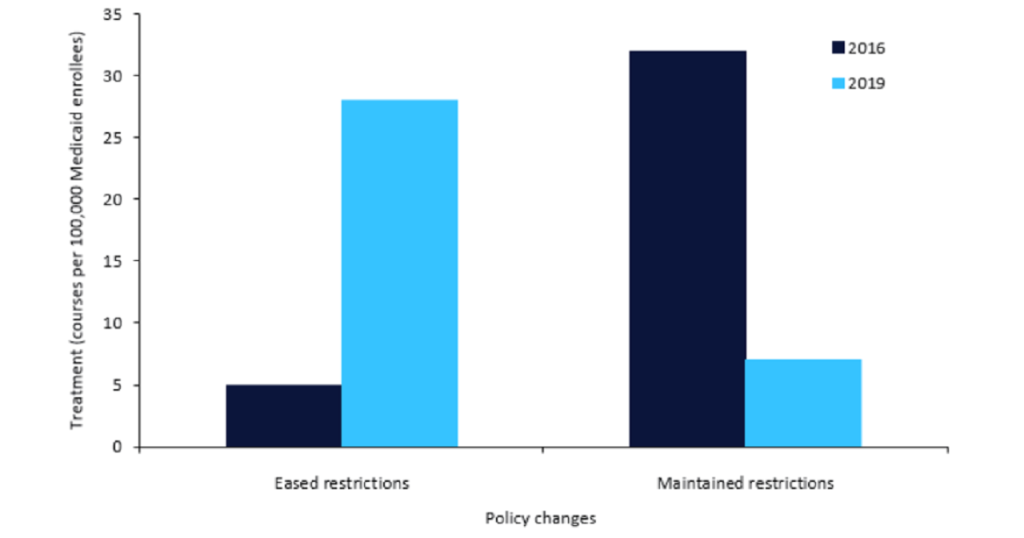Real world evidence (RWE) is not new; RWE is already in routine use in the EU, especially for marketed products and for safety monitoring and drug utilization. Recently, there’s been increasing interest in the use of RWE for efficacy, outcomes for Health Technology Assessment (HTA), as well as for rapid cycle evaluation of medicines. There is major potential to increase the use of RWE to support lifecycle product development and monitoring and to improve decision-making for regulations (1).
RWE research is an area of methodological innovation. It is fast becoming an increasingly important component of biopharmaceutical product development and commercialization. While RWE promises to transform patient outcomes, it also threatens to upend long-established norms in the generation and use of health care evidence. RWE challenges the traditional paradigm in which the only authoritative medical evidence is generated through prospective randomized clinical trials, validated through peer reviewed publication in reputable journals, and incorporated into broadly applied clinical practice guidelines (2, 3).
Real World Data: An Essential ‘Component for Health Care Decision-making’
Real world data has been defined by the Association of the British Pharmaceutical Industry as data collected outside the controlled constraints of conventional randomized clinical trials to evaluate what is happening in routine clinical practice (4). While clinical trials provide the ‘gold standard’ for establishing treatment efficacy, they are conducted in small populations under tightly controlled conditions and thus alone are insufficient to guide clinical practice (5).
As a result, real world data have become important components for health care decision-making (6). By operating outside the confines of clinical trials, real world data can be used to understand treatment effectiveness as well as to provide insight into patterns of care, long-term drug safety, health care resource utilization, and disease epidemiology. The rise of HTAs globally puts significant emphasis on health economic and outcome research analysis and RWE provides critical inputs into this (7).
Today, a regulatory authority may require post-approval research or monitoring to determine real world safety, due to concerns about a product’s safety when it becomes widely prescribed. On the other hand, payers may require validation of a product’s real world clinical value and cost-effectiveness to determine optimal formulary placement.
The EMA guidance11 requires the collection of risk-benefit data in post-authorization safety studies. Pharmaceutical companies now must take a more granular approach, examining different subpopulations to determine their respective risk-benefit balance. There is also an increasing demand from payers to conduct observational studies on a new product’s effectiveness, and payers and clinicians are eager for more detailed health outcomes data to inform prescribing and reimbursement decisions.
How well do you really know your competitors?
Access the most comprehensive Company Profiles on the market, powered by GlobalData. Save hours of research. Gain competitive edge.

Thank you!
Your download email will arrive shortly
Not ready to buy yet? Download a free sample
We are confident about the unique quality of our Company Profiles. However, we want you to make the most beneficial decision for your business, so we offer a free sample that you can download by submitting the below form
By GlobalDataThe increasing availability of RWE, combined with a growing desire from regulatory and HTA bodies, is leading to RWE being incorporated more often into the necessary data packages for reimbursement. However, obstacles such as the quality of data and the integration of disparate sources of data will provide a challenge in the near future.
‘The Need for Broader Information’
RWE can be divided into two types: primary data, collected specifically for research purposes; and secondary data, collected for other purposes. Primary data are generally obtained from study-specific case report forms, electronic medical and health records, and/or clinical outcomes assessments. These data are collected in interventional Phase IV studies, non-interventional prospective observational studies, patient registries, and health surveys. Secondary data are often obtained from clinical chart reviews, registries and/or insurance claims databases, and are used in retrospective database studies or as an input to prospective study design or hybrid studies.
Evidence from “real world” practice and utilization – outside of clinical trials – is seen as a way of tailoring health care decision-making more closely to the characteristics of individual patients, and thus as a step towards making health care more personalized and effective.
The growing industry need for broader information on real world effectiveness and safety—both of which will impact the eventual reimbursement and utilization of new products—is driven by regulators, public and private payers, and prescribers, all of whom seek to better understand the impact of a new product in a real world setting. The result is that real world evidence is now included earlier in the research and development phase.
To meet the increasing demand for RWE studies, sponsors and clinical research organizations are ramping up their capabilities in this growing area of interest. Many are forming partnerships and building capabilities to leverage the opportunities offered by RWE. Essentially, these data help fill the knowledge gap between clinical trials and actual clinical practice.
The Lowdown on Non-Interventional Studies
In contrast to a clinical trial, observational studies, also called non-interventional studies (NIS) reflect actual patient behavior and how a product is used and performs in daily medical practice. Such studies are increasingly important to securing reimbursement from payers, both public and private. Payers can more accurately assess the value of a drug or technology with evidence drawn from a real world setting (8).
A non-interventional study must meet all of the following three criteria:
1) The investigational medicinal products (IMPs), excluding placebos, are authorized
2) According to the trial protocol, the investigational medicinal products are used in accordance with the terms of the marketing authorization. Additionally, the use of IMPs must be evidence-based and supported by published scientific evidence on the safety and efficacy of those investigational medicinal products in any of the Member States concerned
3) The additional diagnostic or monitoring procedures do not pose more than minimal additional risk or burden to the safety of the subjects compared to normal clinical practice in any member state concerned
The sponsor registers the study on EudraCT, applies to the regulatory authority for approval to run the trial, and secures approval from the Research Ethics Committee and other applicable approval bodies. In contrast, non-interventional studies are based on simple research designs, but because regulations have not been harmonized, the approval process is complex.
Clinical trial legislation has not been changed for a decade, but globally, legislation for non-interventional studies change almost every six months. The companies that expect a regulatory environment in flux will be more likely to marshal their resources to transform promising ideas into reality.
In clinical trials, the study sponsor is responsible of the record keeping associated with the receipt, storage, and dispensation of an investigational product. The study sponsor is responsible with manufacturing, packaging and distributing the product to the study sites. The study sites are responsible for maintaining adequate records of product handling and dispensation. Often sponsors will provide tools, such as tracking logs to assist in the maintenance of such records.
In non-interventional studies, the study medication is on the market. The investigator will prescribe the study medication to be used according to the Summary of Product Characteristics (or SPC). The patient will get the medication in the pharmacy. The patient is responsible for storing the medication. The investigator and sponsor don’t control the medication.
There is no need to account for the drug, no need for special labeling, and no need for adequate records. There are some questions and doubts regarding this study medication: how do you know that the study medication has been prescribed by the Investigator, the study medication has been bought by the patient and the study medication has been taken by the patient? It is important to establish guidelines for drug accountability during these studies.
Summary
In conclusion, RWE research is an increasingly important component of biopharmaceutical product development, commercialization, and health care decision-making. In future, it is expected to perform the basis of drug accountability guidelines for non-interventional studies.
Ramón López
Clinical Research Manager
Thrombotargets Europe
References
1) Arlett P Update on Real World Evidence Data Collection, 2016 EMA
2) Cziraky M, Pollock M. Real-World Evidence Studies Applied Clinical Trials 2015
3) FournieX, Sandra X, Wiederkehr. Interventional vs. Non-interventional Study Classification in the EU: Considerations on the Impact of Direct-to-Patient Contacts. http://ec.europa.eu/hea
4) The Association of the British Pharmaceutical Industry. The vision for real world data – harnessing the opportunities in the UK demonstrating value with real world data acknowledgements. 2011. http://www.abpi.org.uk/ourwork/library/industry/Documents/Vision-for-Real-World-Data.pdf. Accessed22 June 2016
5) 2. Nallamothu BK, Hayward RA, Bates ER. Key issues in outcomes research beyond the randomized clinical trial the role of effectiveness studies in evaluating cardiovascular therapies. Circulation. 2008;118:1294–303.oi:10.1161/CIRCULATIONAHA.107.703579
6) Garrison L, Neumann PJ, Erickson P, Marshall D, Mullins CD. Using real-world data for coverage and payment decisions: The ISPOR Real-World Data Task Force Report. Value Heal. 2007;10(5):326–35
7) McDonald et al. B. Real-world data in the United Kingdom: opportunities and challenges MC Medicine (2016) 14:97
8) DIRECTIVE 2001/83/EC OF THE EUROPEAN PARLIAMENT AND OF THE COUNCIL







